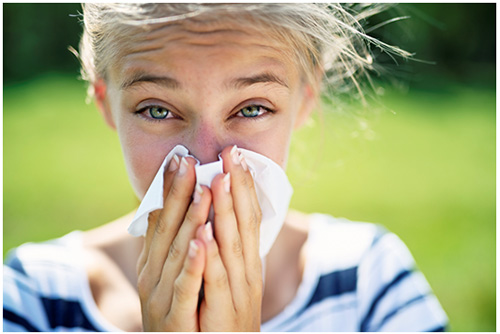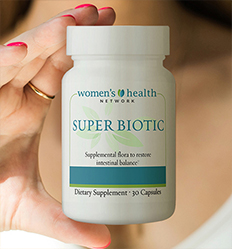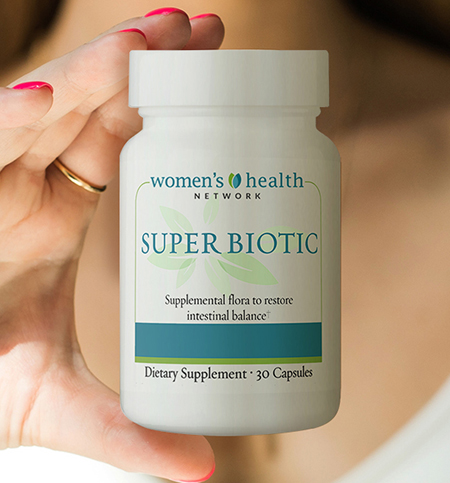By WHN Editors
After a long, cold winter, nothing feels better than spending time outside in the warm spring sun – unless you have allergies. Need some all natural tips to help you avoid the sneezing, wheezing, itchy eyes and runny nose that come with spring pollen season? We’ve got you covered with our best tips for spring allergy relief.

Try these 5 tips to get relief.
Fill your diet with allergy-fighting foods. Leafy green vegetables, broccoli, cauliflower, leeks and spring onions are rich in quercetin, a bioflavonoid that’s been shown to moderate histamine production and reduce irritation of the airways during an allergen exposure. It does take time to build up sufficient quercetin to reap these benefits, so make these healthy veggies a regular part of your meals during allergy season — and all year round.
Other helpful foods for fighting allergies include papaya and pineapple. The two tropical fruits are naturally rich in bromelain, an enzyme that is used in natural medicine to reduce airway swelling and improve ease of breathing when allergies attack.
Get more probiotics. A 2015 review of over 20 studies confirmed that probiotics in the gut may help to improve symptoms of “allergic rhinitis,” including itchy and stuffy nose, that result from inhaling pollens, mold and other allergens. More than 75% of immune cells reside in the gut. While the connection between probiotics and allergies is still not fully understood, researchers believe probiotics may help to regulate immune reactions to allergens by preventing overproduction of pro-inflammatory cytokines. To boost probiotics in your gut, eat more probiotic-rich foods or take a high quality probiotic supplement.
Flush allergens out with nasal irrigation. Gently rinsing your nasal passages with a saline solution helps to open up the nasal passages, clear out mucus and remove the pollen and other irritants triggering allergic reaction. Performed with a neti pot or bulb syringe, sinus flushing has its origins in Ayurvedic medicine. New to nasal irrigation? Get our DIY saline rinse recipe and directions for rinsing here.
Stay in spring cleaning mode. Every time you open a door or window, it’s an invitation for fine particles of pollen to come inside and cause allergy trouble. So, instead of a one weekend blitz of spring cleaning, make dusting and vacuuming a regular habit to cut down on circulating dust, mold and animal dander. The following routines are especially helpful for reducing allergens that have found their way indoors:
- Regularly clean bedding, drapes and other items that tend to attract allergens (including pet dander).
- Vacuum carpets and area rugs at least once or twice a week with a vacuum cleaner equipped with a HEPA filter; regularly sweep and mop hardwood and tile floors.
- Clear out clutter — a known magnet for pollen, dust and mold!
- Wipe down walls with a damp cloth, especially near outside doors. (Wipe down the door, too!)
Make mint the scent of spring. Peppermint has strong anti-inflammatory effects that can help reduce symptoms of bronchial asthma and allergic rhinitis, according to a 1998 study. This is an easy allergy hack to employ. Use an essential oil diffuser to pump your indoor air with minty scent, mix a few drops of peppermint essential oil with your favorite body lotion or skin oil, and make some springtime-perfect peppermint iced tea! Brew the tea with hot water to release the oils, then chill. Who knew fighting allergies could be so refreshing?
You might also like: How to know if you have hidden food allergies or sensitivities












